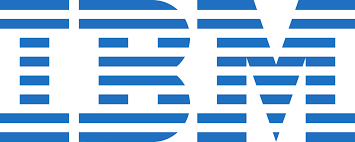Time Series forecasting With R - A Practical Approach
High-performance time series forecasting tools made easy to understand and apply

Lectures -82
Resources -4
Duration -7.5 hours
Lifetime Access

Lifetime Access
30-days Money-Back Guarantee
Get your team access to 10000+ top Tutorials Point courses anytime, anywhere.
Course Description
Become the Best Time Series Expert in Your Organisation!
The goal of this course is to convert you into a highly skilled time series forecaster. You will learn the most effective forecasting techniques that analysts use every day to make accurate predictions about the future. This will make you invaluable to your organisation and help you speed up your career like a flash. A time series analyst makes about $70,000 a year on average, but the top performers can make as much as $130,000 (according to SimplyHired).
This course will be a revolution for you, even if you don’t know anything about time series forecasting at this point. After completing it, you will know how to...
Investigate historical data,
Detect trends and patterns
Choose the most appropriate forecasting methods
Assess forecasting accuracy
Reduce forecasting error
In a word, time series forecasting is a critical data science skill. If you want to be a full-blown data analyst, you have to master time series.
Without further delay, let’s see what you are going to learn in this course.
In the first two sections (not counting the introduction), we build the foundations. The second section presents all the steps we must take to perform time series forecasting in practice, while in the third section, you will become familiar with the essential time series notions. You will learn about trend and seasonality, time series decomposition, visualising trends, spotting seasonal patterns, etc.
The fourth section is about evaluating forecasting performance. We will review the most commonly used accuracy metrics for time series forecasting and explain them in detail. (We are going to use them extensively throughout the course.)
In the fifth section, you will find a brief overview of the forecasting techniques approached in the course. The following sections examine these techniques in great detail and offer practical applications for each, using the R program.
The forecasting methods studied in this course are:
Moving averages (section 6). We don’t have to discard the simple forecasting methods, because sometimes they are more effective than the complex ones. This is why we start by looking into the moving averages, both simple and weighted.
Simple exponential smoothing (section 7), an extension of the moving averages method. In this section, we introduce a very important R function for time series forecasting: ets. More details in the course.
Advanced exponential smoothing (section 8). Here we delve into really good stuff: we learn to forecast complicated series that present both trend and seasonal patterns. You will become familiar with two powerful models, Holt and Holt-Winters.
Extended exponential smoothing methods (section 9). In this chapter, we will implement state-of-the-art models for series with double seasonality: TBATS and STLM.
Regression models (section 10). These models can be used for series with both trend and seasonality. They are easy to understand and apply.
Autoregressive – or ARIMA – models (sections 11 and 12). These models represent a must-have tool for any time series forecaster. They can be extremely effective in many situations, since they can make predictions with a remarkable level of accuracy. In this section, you’ll learn all-important concepts like autocorrelation, stationarity, integration, autoregressive processes and moving average processes. Afterwards, you’ll learn how to identify an ARIMA model using the autocorrelation charts, how to build these models in R and how to use them for forecasting purposes.
Neural networks (section 13). Here we will deal with a special function that creates neural network models for time series forecasting.
Every technique is presented in a video, with both the syntax and the output being thoroughly explained. At the end of the course, a good number of practical exercises are proposed. These exercises will help you practice and improve your time series forecasting skills.
Join this course today and get hold of a mission-critical ability – time series forecasting!
Goals
- Know the time series forecasting steps.
- Know the essential time series components.
- Know the most important forecasting accuracy metrics.
- Use the moving averages and the simple exponential smoothing techniques.
- Use the advanced exponential smoothing techniques: Holt and Holt-Winters.
- Use extended exponential smoothing models: TBATS and STLM.
- Build regression models with trend and seasonality.
- Understand important concepts like autocorrelation, stationarity and integration.
- Build autoregressive integrated moving average models (ARIMA).
- Build neural networks for time series forecasting.
Prerequisites
- Basic R programming notions.
- Basic statistics notions.

Curriculum
Check out the detailed breakdown of what’s inside the course
Forecasting Basics
3 Lectures
-
Introduction to time series forecasting 01:04 01:04
-
Forecasting steps 07:57 07:57
-
Notations 01:39 01:39
Time Series data
4 Lectures

Assessing Forecasting Performance
3 Lectures

Forecasting Methods: a Brief Summary
3 Lectures

Moving Averages
9 Lectures

Simple Exponential Smoothing
5 Lectures

Advanced Exponential smoothing
15 Lectures

Extended Exponential smoothing
5 Lectures

Regression Models
11 Lectures

Autoregressive Models - Fundamentals
9 Lectures

Autoregressive Models - Practice
5 Lectures

Neural Networks
6 Lectures

Documents and files
4 Lectures

Instructor Details

Bogdan Anastasiei
Course Certificate
Use your certificate to make a career change or to advance in your current career.

Our students work
with the Best


































Related Video Courses
View MoreAnnual Membership
Become a valued member of Tutorials Point and enjoy unlimited access to our vast library of top-rated Video Courses
Subscribe now
Online Certifications
Master prominent technologies at full length and become a valued certified professional.
Explore Now


 Updated on Nov, 2025
Updated on Nov, 2025
 Language - English
Language - English